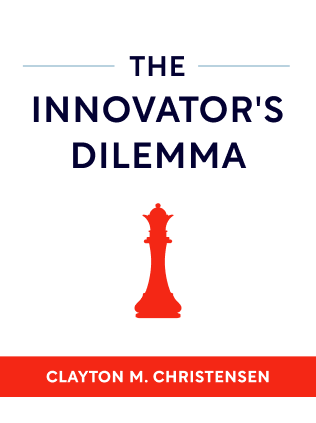

This article is an excerpt from the Shortform summary of "The Innovator's Dilemma" by Clayton M. Christensen. Shortform has the world's best summaries of books you should be reading.
Like this article? Sign up for a free trial here .
What is flash memory? How was flash memory technology a disruptive innovation?
Flash memory technology, or flash memory storage, disrupted the disk drive industry in the 1980s. So, what is flash memory? It is a type of memory that uses less power and can be more durable.
So, what is flash memory? Read on to find out how flash memory storage works and why it matters.
Overview: What Is Flash Memory?
Flash memory technology was developed in the 1980s and threatened to disrupt the disk drive industry. What is flash memory’s attraction? Initially, it attracted customers outside the computer value network, including makers of heart monitors, cell phones, industrial robots, and modems. (Shortform note: Today, flash memory storage is ubiquitous and is used in solid-state hard drives, smartphones, USB flash drives, and digital cameras.)
True to any disruptive technology, it had immediate advantages and disadvantages compared to disk drive technology. The advantages included:
- Less than 5 percent of the power consumption of a disk drive with the same capacity
- More durability in harsh conditions
The disadvantages included:
- Significantly higher cost-per-megabyte
- Shorter lifespan
What is flash memory storage’s market impact? The flash card market brought in $45 million in 1993 and $80 million in 1994—and that was projected to jump to $230 million by 1996.
What is flash memory’s impact on the disk drive value network? Did it upend established firms’ dominance? Here’s how each of the theories we discussed would guide predictions.
1) The Organizational Structure Framework would categorize flash memory as a radical technology. As such, established firms that were set up to facilitate a different workflow and communication structure than flash memory demanded could only develop flash memory products if they created independent entities to lead the effort.
This held true: Seagate bought a 25 percent equity in SunDisk Corporation (which was later renamed SanDisk) to design and develop the flash memory cards.
2) The Capabilities Viewpoint would recognize that, although flash memory used significantly different technology than disk drives, disk drive makers had all the knowledge they needed to succeed. Established firms were experienced in designing technology, buying component parts from suppliers, coordinating products’ assembly, and marketing and selling them. The companies could apply these general capabilities to producing flash memory and competing with startups.
Seagate did, in fact, use its capabilities to go into business with SunDisk, find component suppliers and a manufacturer, and then market the products itself.
3) The Technology S-Curve Framework would note that the rate of improvement of disk drive technology had not yet slowed to a point that the S-curve of the new technology’s progress could intersect with the old technology’s S-curve. That means that disk drives were not yet at risk of being replaced by flash memory.
4) The Value Network Framework would disregard established firms’ organizational structures and capabilities as reliable predictors of whether the firms would be toppled, and it would disregard the S-curve framework because that only applies to sustained technologies. Instead, the Value Network Framework would predict whether established firms would invest in their own flash memory products based on their customers’ interest.
By the mid-1990s, flash memory technology couldn’t offer computer makers what they needed, so Seagate pulled its few flash products from the market, though it retained its equity in SunDisk.
Outcome of This Innovation
The Value Network Framework best predicted established companies’ trajectories. What is flash memory and how did they respond?
Disk drive makers hit a limit on how much they could lower the production cost per drive. Since low-capacity disk drives had the same cost floor as high-capacity drives, disk drive makers focused on producing high-capacity drives (around a gigabyte or more), which better served its customers.
This left an opening for flash memory cards to fill the void in the emerging 10-40 megabyte market. Industry experts predicted that a 40 MB flash card and 40 MB disk drive would be around the same price by the time the book was published in 1997.
(Shortform note: Flash memory eventually improved enough to invade an established market and replace hard disks in laptops. Flash-based solid-state drives (SSDs) are now in top-performing laptops, including the MacBook Pro and Microsoft Surface.
Although Seagate quickly withdrew its flash products from the market, the company made a wise decision in retaining a stake in SunDisk—in fact, it’s a strategy we’ll talk more about in Part 2. SunDisk was eventually renamed SanDisk, and the company is now one of the top eight vendors in the memory card market worldwide.)

———End of Preview———
Like what you just read? Read the rest of the world's best summary of Clayton M. Christensen's "The Innovator's Dilemma" at Shortform .
Here's what you'll find in our full The Innovator's Dilemma summary :
- Christensen's famous theory of disruptive innovation
- Why incumbent companies often ignore the disruptive threat, then move too slowly once the threat becomes obvious
- How you can disrupt entire industries yourself






